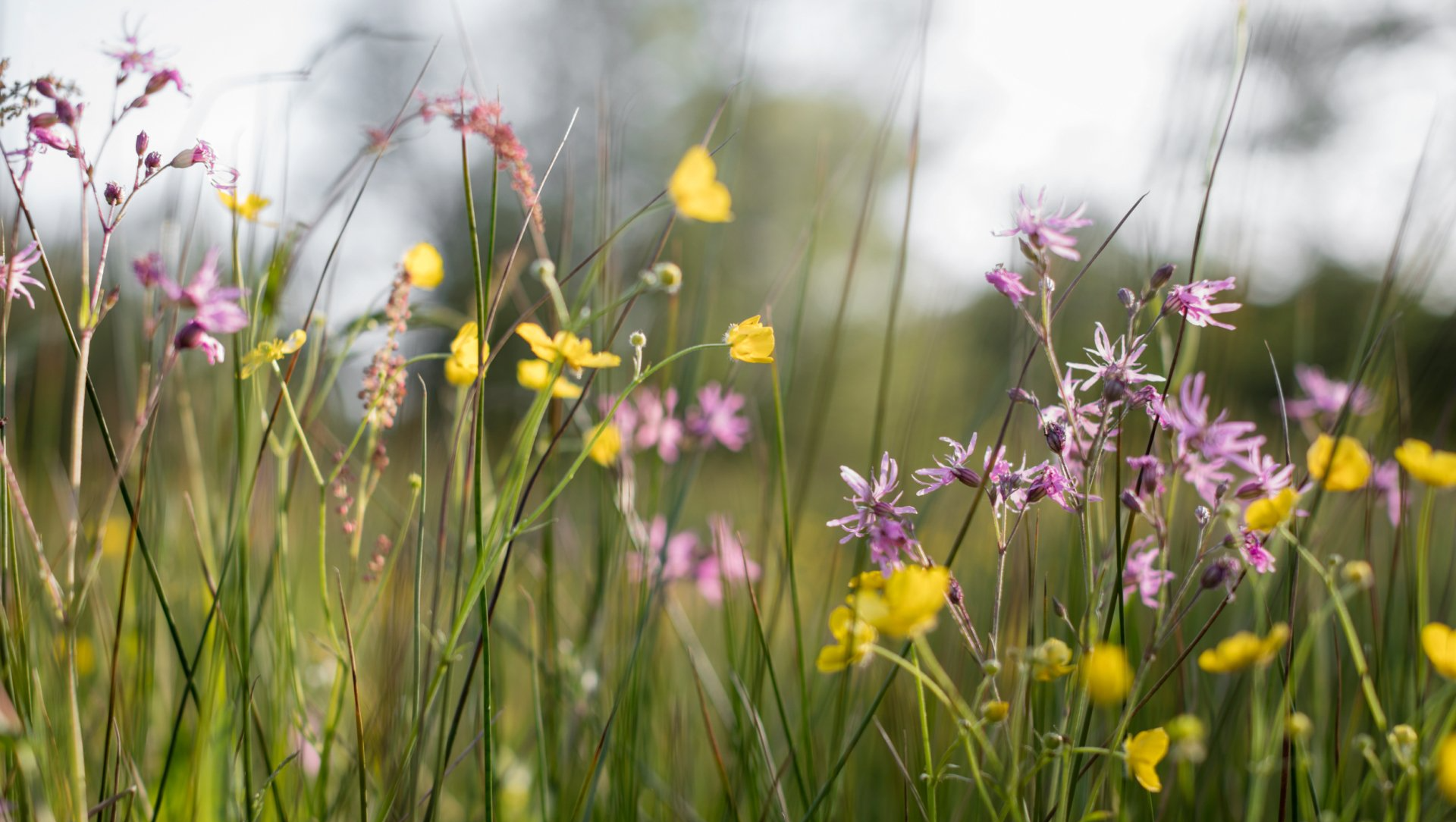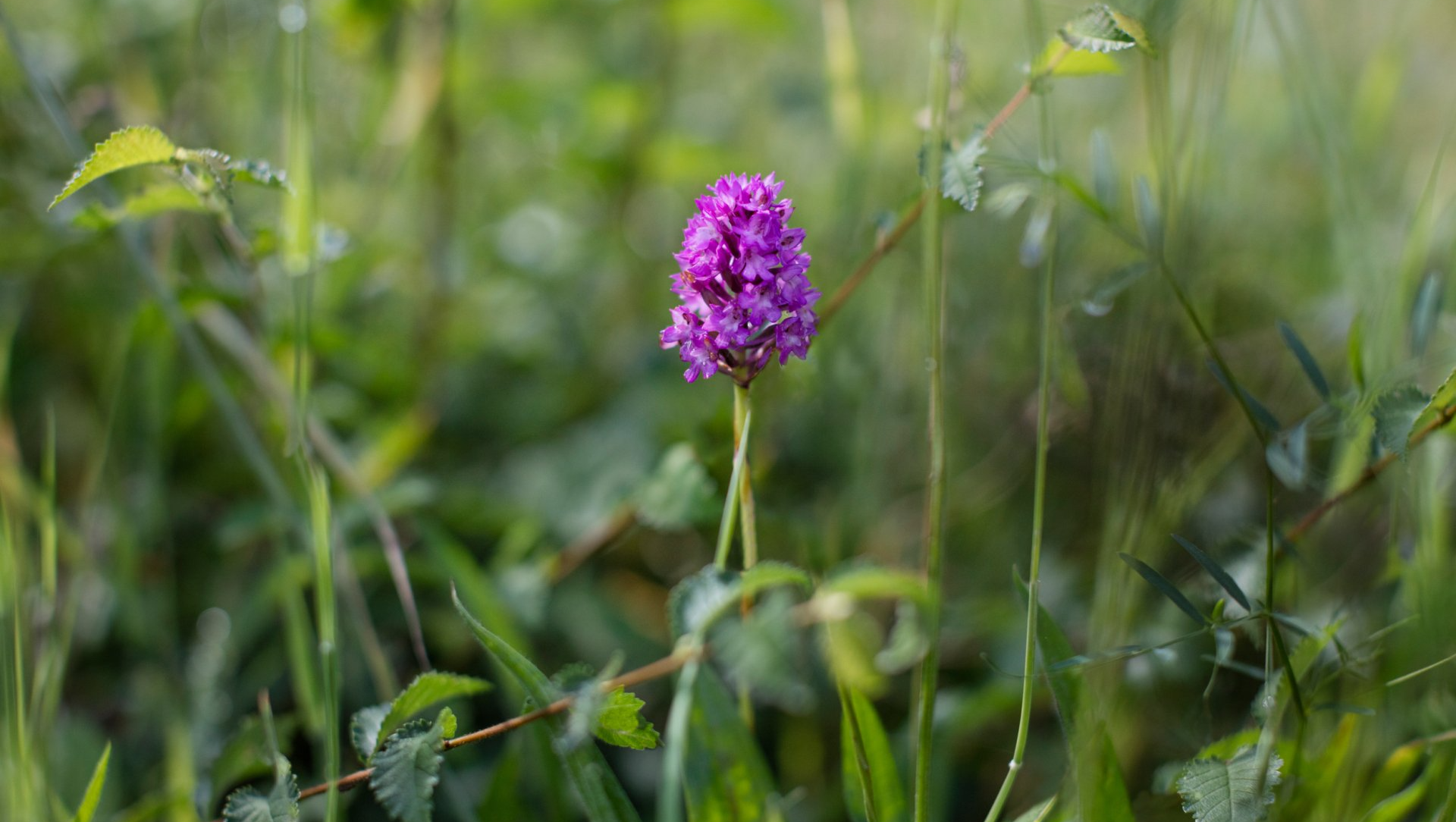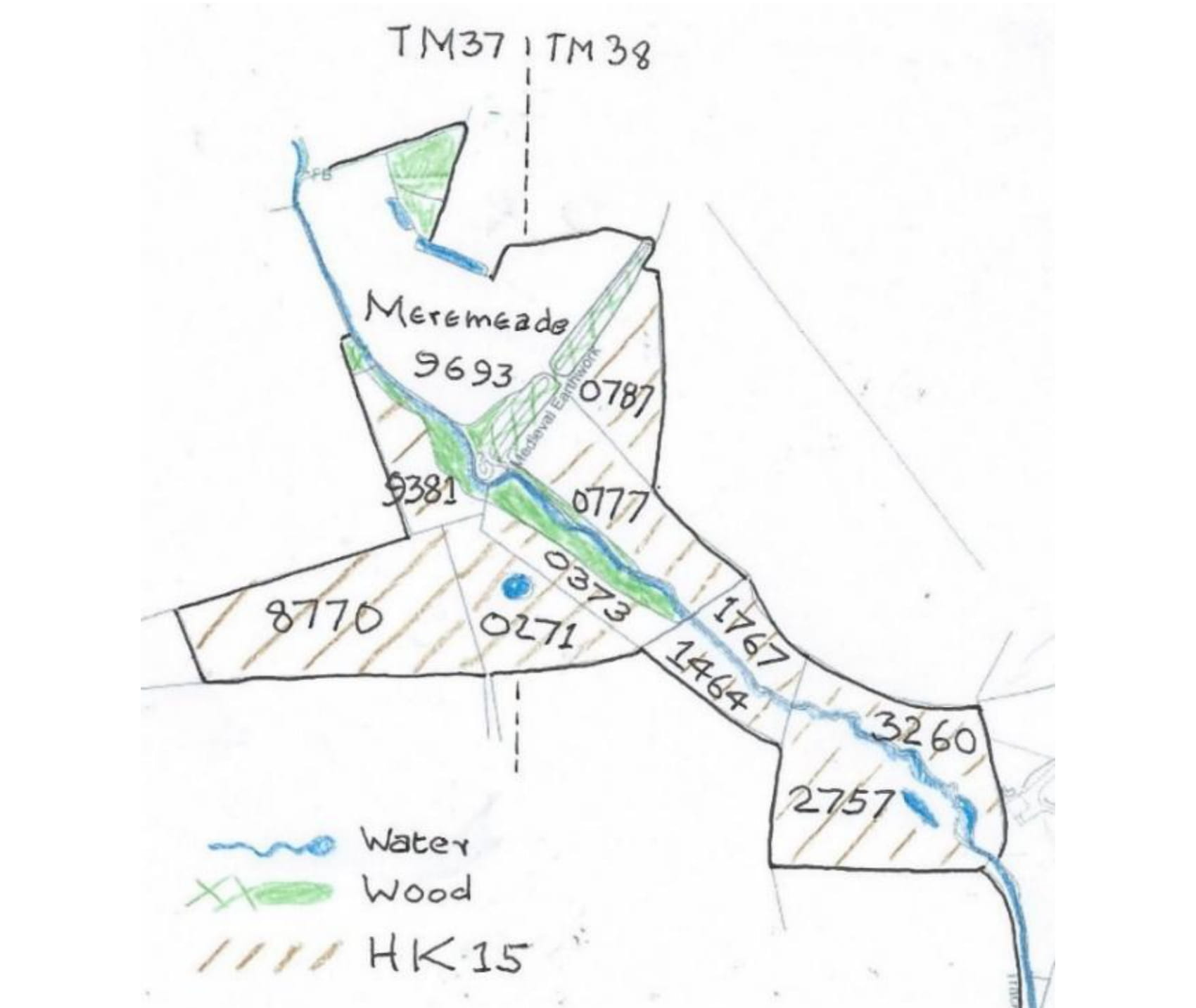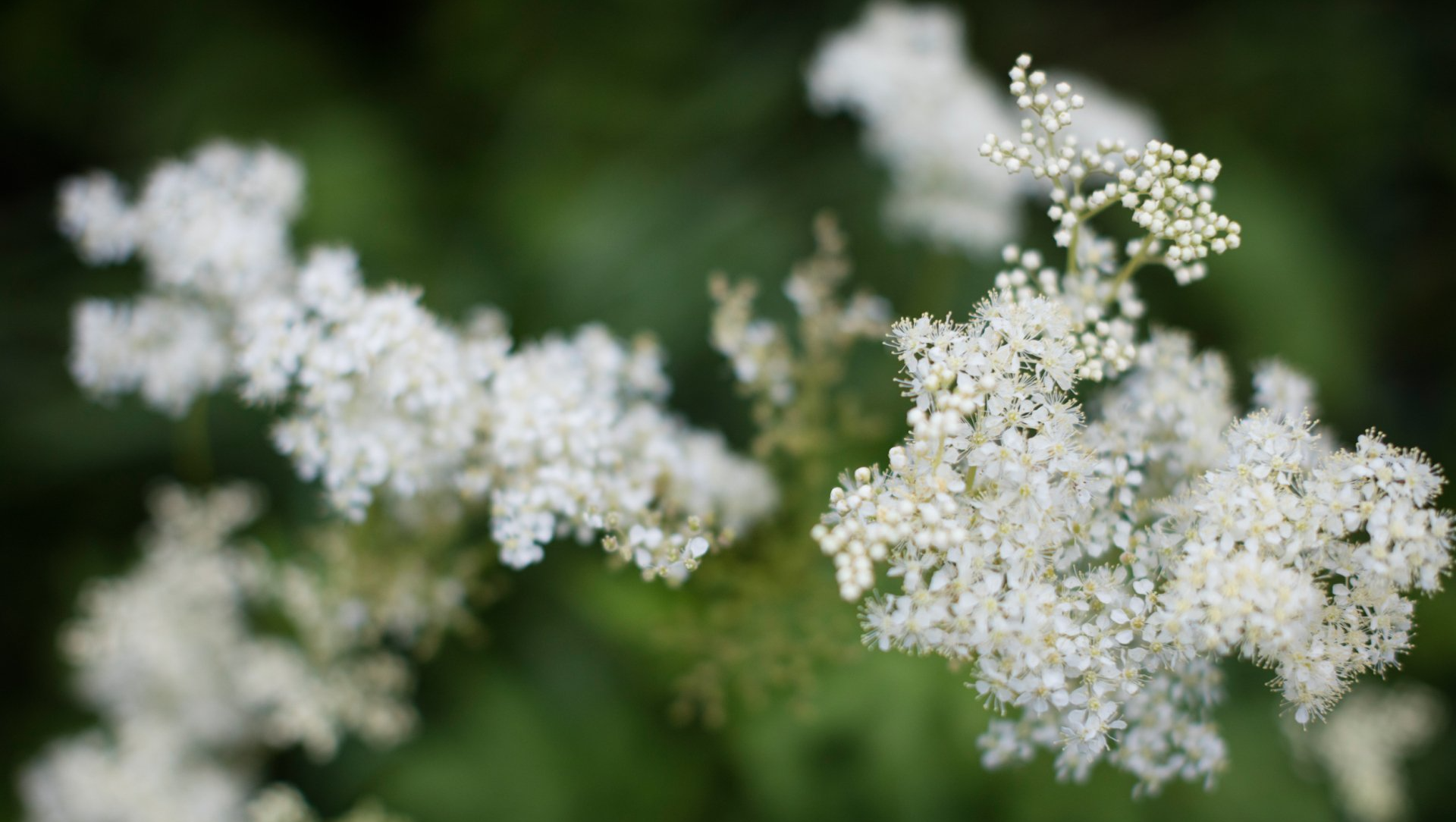WildFlowers - Suffolk Flora Preservation Trust
The Suffolk Flora Preservation Trust was set up in the late eighties to help protect historic and natural biodiversity in the county.
Since then the charity has purchased two sites, one called Simpson's Fromus Valley, and the other called Orchid Glade.
Lord Cranbrook is a spokesperson for the charity, and says the rich grasslands of Orchid Glade host an abundance of wildflowers.

Early Pledgees to the
WildEast
map of dreams, the
Suffolk Flora Preservation Trust is an entirely volunteer-run conservation charity, guided by the wishes of the late Francis Simpson. Described as Suffolk's Gilbert White, for 60 years Francis Simpson chronicled, and grieved over, the price paid for progress by Suffolk's wildlife, especially its wild flowers. He knew Suffolk and its plants intimately: apart from recording them in the countryside, he was the Keeper of Natural History at
Ipswich Museum, and the botanical recorder for Suffolk.
The Trust’s mission is to purchase land to “permanently preserve for the benefit of the public generally, especially the inhabitants of the county of Suffolk, sites of beauty or historical or ecological interest or scientific importance and in particular the natural flora of the county of Suffolk”. The Trust relies solely on the hard work and dedication of local volunteers to function with a wide range of interests from flora enthusiasts, writers, photographers and artists to scientific recorders, conservationists and even archaeology specialists.
Since it foundation the Trust has purchased, managed and transformed two blocks of former agricultural land, the
Fromus Reserve, in Kelsale just outside Saxmundham and
Orchid Glade in Hasketon. The two reserves are open to Guardians and subscribers to the Trust, with membership subscriptions supporting the management of the two reserves.

The first of the Trust’s two sites is Simpson’s Fromus Valley. The reserve is a beautifully preserved wildlife site in a hidden Suffolk valley with meadows, woodland, ancient trees and network of ponds. Foremost amongst the hidden highlights is the river Fromus, which runs through a wooded gulley cutting a deep gorge out into the meadows, through the length of the Reserve before flowing out into Kelsale village, Saxmundham and Sternfield to join the Alde around Snape Watering.
Amidst the medieval meadows of this reserve, there are also four intriguing ponds reflecting the historic use of the site, first as a monastic fishery, and later as a Duke’s deer park. Today, when you visit the Reserve, you can see the remaining features of all this activity: a flat raised meadow where finds of potsherds may indicate habitation and, most impressively, a 200-metre earthwork which formed a dam across the valley. This dam would have held back the water for the huge fishpond, which is now dry, its ghost in the name of Mere Meadow lying upstream from the dam recalling the former fishpond, which would have extended upstream some 600 metres.
A detailed history of the medieval Kelsale Park has been assembled by the Trust’s landscape Archaeologist John Rainer with the help of Dr Rosemary Hoppitt and the
Suffolk Archaeological Fieldgroup, first in 2015, and now updated in 2020 as more information has been uncovered. It transports you back to the days when the park was a status symbol and centrepiece of the Bigods Suffolk estates, Dukes of Norfolk and a leading medieval family.

Before Suffolk Flora Trust purchased the land in 2005 the site formed part of larger mixed agricultural holding and was not managed for conservation purposes although the network of small unimproved meadows are an important remnant of a once common habitat. Since acquiring the land the trust has installed a boundary fence, surrounding the whole reserve, the pastures have been enclosed and a water supply provided. This has been to allow for conservation grazing by the Trust’s own herd of British White rare breed cattle under the care of Theberton farmer Philip Baskett.
The cattle are over wintered to preserve ground conditions but then brought on in Spring and then rotated around the meadows to allow the swarm to grow to allow a hay crop and flora to flourish. Species rich meadows are a priority habitat having declined in the United Kingdom by 97% since the 1930s. The meadows at Simpson’s Fromus Valley are carefully managed to encourage the return of diverse flora and interrelated fauna and hay cutting and grazing is a vital part of that management, with cattle bringing their benefits to ground conditions and habitats.
A thorough baseline was recorded by Honorary Guardian Laurie Forsyth, used as a basis for establishing management practices, and are kept and constantly updated by volunteers and trustees. Made available on the Trust’s website, to date Flora records have over 82 recorded species, grasses 15 and Sedges and rushes 7. In addition the 27 acres at Fromus Valley now support over 50 bird species including those on the endangered list such as
bullfinch,
yellowhammer and
skylark. The site provides a wildlife haven amid intensively farmed arable land attracting high numbers of passing migrant birds in the winter, such as fieldfares and redwings and acting as a refuge for resident bird species. A stagnant pond has been de-silted back to its clay base and scrub and trees managed or coppiced to allow more light into the pond. Interesting emergent and marginal plants such as
thread-leaved water crowfoot,
branch bur-reed and
pink water speedwell are expected to re-colonise. Insect life completes the ecosystem; beetles, flies, four species of dragonfly, bees and butterflies abound, highlighting the importance and species diversity found within thisrelatively small pocket of meadow land.

Figure 1. Sketch map of Simpson’s Fromus Valley Reserve showing RLR ‘Parcel’ numbers;
Figure 2. Figure 2 field names chosen by Charlotte Daniel. Cross hatching shows meadows eligible under the Higher Level Stewardship Agreement for option HK15.
TM3766 9693 - Meremeade - TM3766 9381 - Dragon meade - TM3766 8770 - New Close - TM3866 0787 - Calves Close - TM3866 0271 - Moon Meadow - TM3866 0373 - Oak Avenue - TM 3866 0777 -Long Meadow - TM3866 1464 - Passage Meadow - TM3866 1767 - Teazle
TM3866 3260 - Cross-river - TM3866 2757 - Butcher’s
.
Orchid Glade at Hasketon was the Trust’s second purchase and it was initially assumed that the same model would be followed as at Fromus, bringing in cattle to open the site particularly round a central pond. However it quickly became apparent that a wilder approach was necessary reflected in the more recent history of the site. The reserve lies at the eastern edge of White House Farm at Hasketon near Woodbridge. Once part of the Boulge Hall Estate, this tenanted farm was sold in 1927. It was purchased at auction by the Palmer family who owned the land until Tom Palmer’s death in 1992.
Following an accident in the 1950s Tom was unable to continue cultivating the arable fields, which reverted to a semi-natural state. The land changed hands in 1993, but continued to be managed for nature conservation by the new owners, Mr and Mrs Laurie Parker. In 1996, the ten-acre field now known as Orchid Glade was planted with mixed broadleaf woodland directly into the plough furrows from the last cultivation; these are still apparent today. In 2002, the whole farm was listed as a
County Wildlife Site. In 2005, White House Farm was purchased by
Sinfield Trust for Nature Conservation, with a financial contribution from the Executors of the Bequest of Francis Simpson to Suffolk Flora Preservation Trust. In 2013 Sinfield Trustees conveyed ownership of Orchid Glade to the Suffolk Flora Preservation Trust.
Since 2013, Orchid Glade has been managed by the same group of volunteer Guardians. The reserve showcases the Trust's commitment to the natural processes of 'wilding' and natural regeneration. From a small access road an adventure footpath marked by posts on its outer side leads through an encircling band of dense woodland, so dark that there is scanty ground flora. The inner side of this path is closed by thickets of slender ash saplings, many of them affected by fatal die-back. Both ends of the path emerge into the central Glade, an uplifting open space, scattered with single trees and clumps of briar or bramble. These shrubby features are shaped by browsing fallow deer and muntjac, and the same deer, along with hares and rabbits, graze the open ground.

ln Spring, the short turf carries the gaze to the bounding woodland. As the season advances, the eye is drawn closer by the richness of the ground flora among which, by early Summer, a search will find flowering twayblades, southern marsh orchids and spotted orchids to justify the name of this small reserve, but its true wildness emerges in July and August. Then, the rich Suffolk clay-land flora is in full bloom and bees, hoverflies and butterflies abound. Newly emerged dragonflies and damsels dash around the three ponds, still home to late tadpoles of frogs, common toads and great crested newts.
ln such varied habitats, birds abound at all seasons: records include ever-present soaring
buzzards, a
greylag goose, grey
heron,
paired mallard, and the inevitable cock pheasant. Flora and fauna are all protected by the enclosing space, which is always open to Guardians, to enchant the mind and restore the spirit. Similar recordings are carried out at Orchid Glade as at Fromus with updates on the website as well as in an annual publication free to all members, 2021’s Retrospect and Resources was the Trust’s 8th Volume. Edited by Janey Cullen and Peter Southgate in includes the latest summary of the two reserves various history as well as an updated species list of all the extensive recorded Flora and Fauna of both reserves. These range from Lichens, Moths and Diptera to Plant galls, invertebrates and fungi.
The Trust’s two reserves show differing approaches to the preservation of our local Flora, one based on the traditional management of low input grazed wild flower meadows, the other as part of a wilder commitment to natural regeneration. The reserves are open to all members and guardians. Entirely run by guardians and trustees supported by this small but growing membership, they also show a template for how small scale community led nature recovery projects and citizen science can have a big impact on not just preserving and strengthening the natural hotspots and corridors within the region but also on recording and monitoring biodiversity, crucial for understanding how we can bring about a wilder and more abundant East.
Flora and Fauna records and details on how to become a member or volunteer are available on the Trust’s website
SuffolkFlora.org

WildEast Blog

Powered by LocaliQ
Follow Us
SIGN UP FOR NEWS & UPDATES
Newsletter Sign Up
Thank you for signing up to our newsletter.
Please try again later.
Privacy / Terms & Conditions / Sitemap
